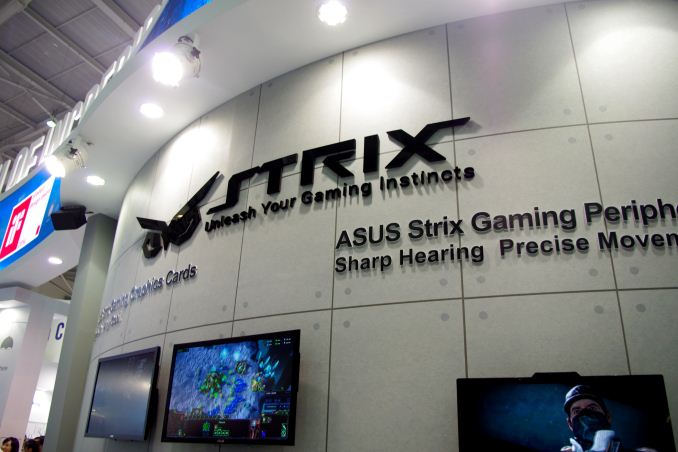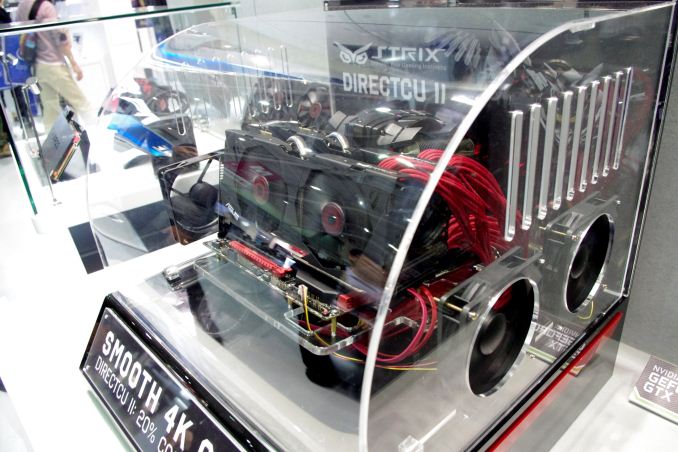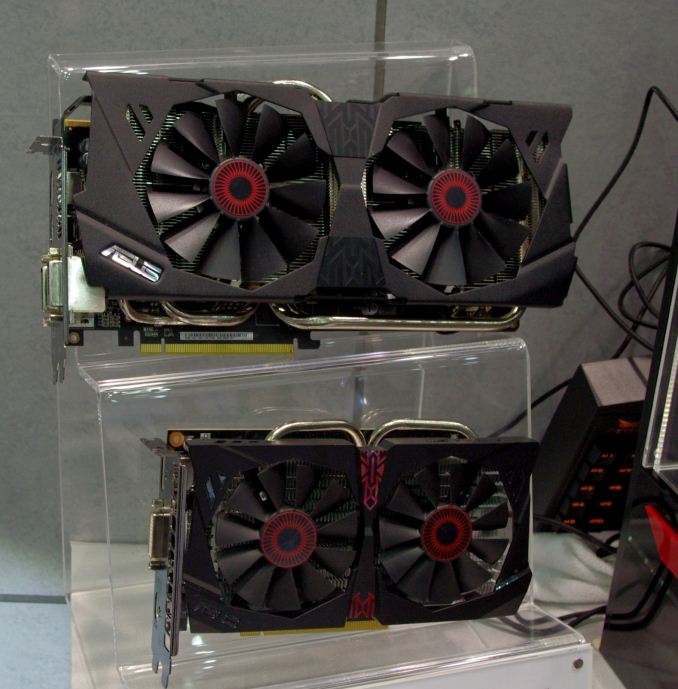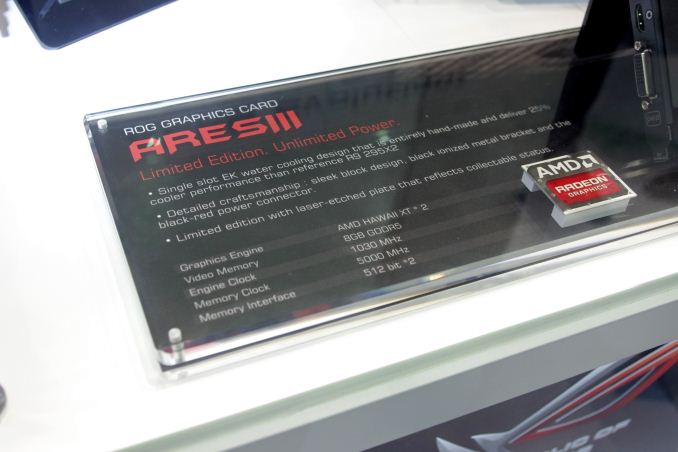Computex 2014: The ASUS Booth Tour
by Ian Cutress on June 11, 2014 11:45 AM ESTGraphics Cards
Recently ASUS has launched their new range of low-noise hardware under the branding of ‘Strix’. The word Strix is derived from the Ancient Roman and Greek words for ‘owl’, specifically a bird of ill omen that fed on human flesh and blood that cries similar to a banshee. I am not sure what this has to do with computer components focused on noise and volume, but the logo is a set of owl eyes. For the end-user this means a couple of sets of headphones as well as a range of graphics cards.
I am not much of an audiophile, but the Strix graphics cards are advertised as ‘0dB’ when idle, which is not strictly possible. Even electrical noise on the logarithmic scale is 15 dB, but to clarify on ASUS’ part, they specifically want to refer to the noise generated by the fan assembly. At idle, the Strix line should completely disengage its fans until the unit heats up to a certain temperature.
Here is a pair of Strix GTX 780 6GB models, with 941 MHz boost clock and DirectCU cooling. The 0 dB fan technology is touted as allowing users who invest in high end Strix model cards to enjoy light gaming in ‘complete silence’ (again, the 15 dB electrical noise will mean it is not strictly silent). The card comes with a DIGI+ VRM with 10-phase ‘Super Allow Power’ as well as GPU Tweak to overclock.
There will be other models on the market in the Strix line:
These are an R9 290 OC (980 MHz, 3GB GDDR5) and a GTX 750 Ti OC both in the making, again using DirectCU cooling on top of the new Strix-branded shroud. Strix is not part of the ROG branding, but aims to compete alongside for those users that require a more silent operation. The only difficulty here is that the software has to be water tight, such that the fans spin back up every time.
Also on display with graphics cards is the new Ares III, an R9 295X2 that comes with an EK water block pre-attached:
By having a water block as part of the package, this means that users can avoid damaging a regular card trying to take it apart as well as avoiding the cost of that dual heatsink water cooling solution. Also in this box were the two previous Ares models, the first being a dual HD 5870 model, whereas Ares II was a dual HD 7970 with a water cooling pump, tubing and radiator.
The clock speeds of the Ares III were also on show:
This shows a 1030 MHz frequency on each of the GPUs.















23 Comments
View All Comments
CknSalad - Thursday, June 12, 2014 - link
Hopefully the GR8 has a desktop cpu. If they are using desktop cpu parts, it would be nice if they have i5 and i7 T-Models as the cpu options (lowest is 35W TDP).I just hope that the custom cooling for the cpu isn't that of a notebook cpu cooler as they did market this as being able to run quietly (small size and low noise are the high points for me). Overall, this custom-built PC has a lot of good potential as a good lan, media, and streaming pc.
jimhsu - Saturday, June 14, 2014 - link
Any news on the UX303 (ultrabook form factor + discrete 840M)? That'll me my next notebook, if nothing better comes out in the interim.Matthew Wills - Thursday, May 16, 2019 - link
It's great that companies like Asus think about education and other social areas. Technologies will now be introduced into the educational system at an incredible speed. Already there are a huge variety of educational websites. Wikipedia is one of the most visited sites in the world. https://edusson.com/ an online writing service, is one of the largest websites that is designed to help students learn. Every day, thousands of students search the Internet for educational materials, but this is scattered throughout the network. The state needs to create its own educational web resource where all necessary information will be collected and systematized.